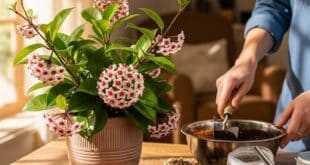Meet The Caladium
Caladiums, often referred to as Angel Wings or Elephant Ears, are celebrated for their stunningly colorful and patterned foliage. These tuberous perennials, native to tropical South America, boast large, heart-shaped or arrow-shaped leaves adorned with vibrant combinations of red, pink, white, green, and bronze. While they can thrive outdoors as annuals in cooler climates, Caladiums are equally suited for indoor environments with the right care.
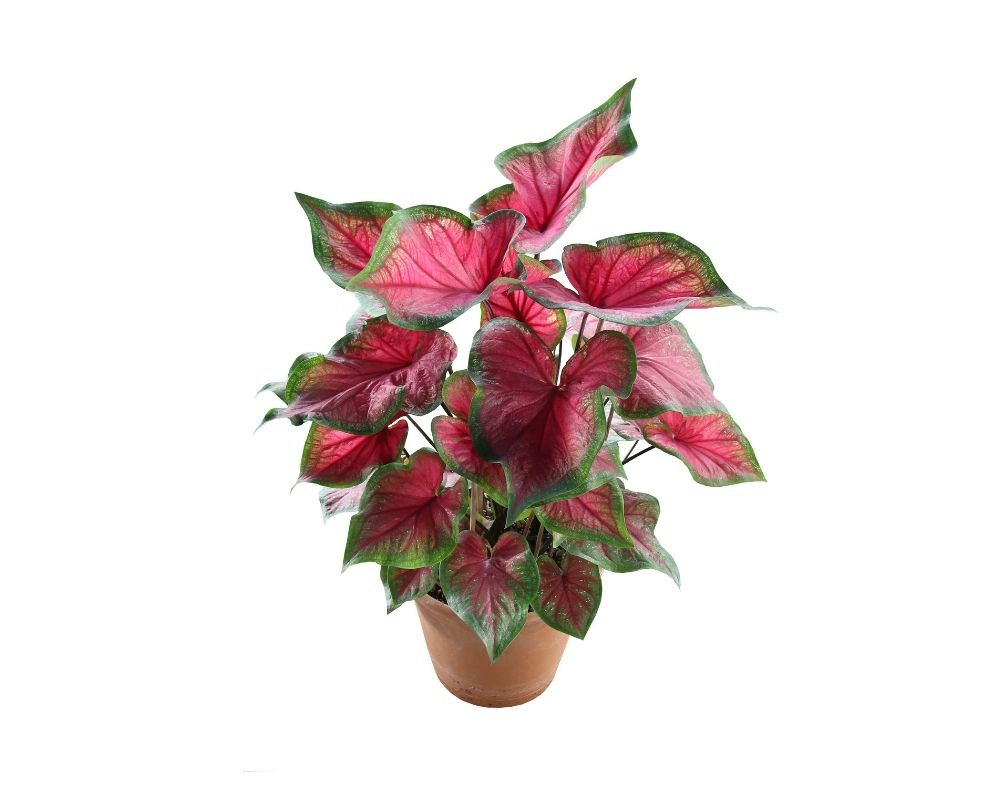
In this guide, we’ll explore essential aspects of Caladium plant care, including light, watering, humidity, soil, and managing their seasonal dormancy.
Why Choose a Caladium Plant?
Caladiums are undeniably showstoppers, and for good reason. Their paper-thin leaves display an incredible array of colors and intricate veining, creating a living kaleidoscope. They can instantly brighten any shady spot in the garden or add a vibrant touch to indoor spaces. Although they have a distinct dormant period, their stunning foliage during active growth makes them a rewarding and visually captivating addition to any plant enthusiast’s collection.
Essential Tips for Caladium Plant Care
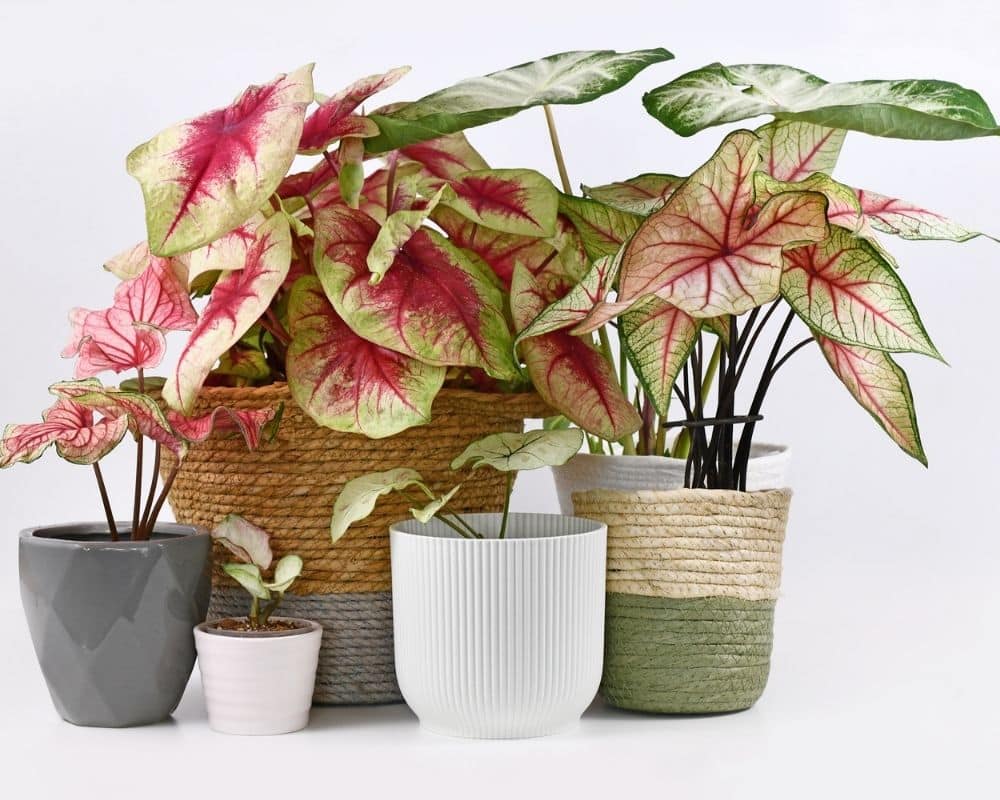
Light Requirements
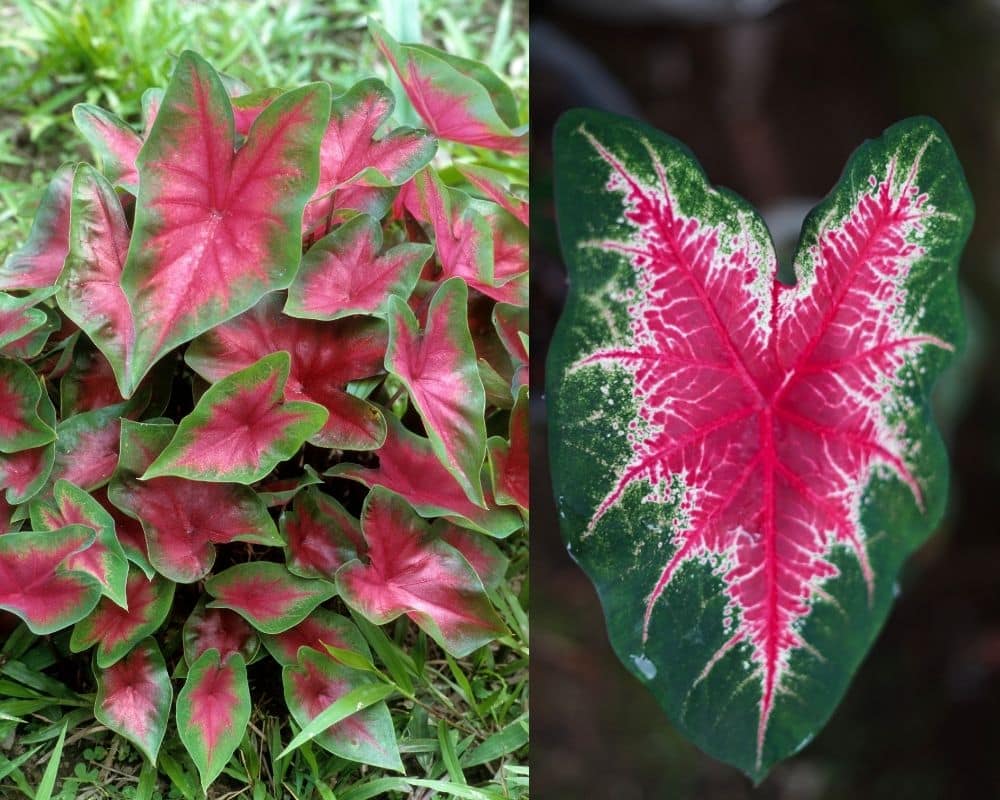
Caladium plant care begins with understanding their light needs:
- Indirect Light and Bright,: Caladiums like bright and indirect light. Direct sunlight can scorch their delicate leaves, especially the white and lighter-colored varieties. Therefore, it’s crucial to provide filtered sunlight.
- Filtered Sunlight Outdoors: When grown outdoors, offer shade during the hottest parts of the day, particularly in warmer climates. Bright morning sun with shaded afternoons is often best.
- Indoor Placement: Indoors, place Caladiums near bright, indirect light sources like east or west-facing windows. South-facing windows may need filtering with sheer curtains.
- Color Intensity and Light: The intensity of leaf colors can be influenced by light levels. Some varieties may show more vibrant hues in brighter indirect light.
Watering and Moisture
Watering is a critical aspect of Caladium plant care:
- Consistent Moisture During Growing Season: During their active growing season (spring and summer), Caladiums prefer consistently moist soil. You should water when the top layer of soil starts to dry out a little.
- Water Thoroughly: Water deeply, allowing moisture to flow through the soil and drain from the bottom of the pot to reach the roots.
- Avoid Letting Them Dry Out Completely: While they don’t like soggy soil, Caladiums also dislike their soil drying out completely for extended periods during active growth.
- Reduce Watering Before Dormancy: As the growing season ends and the leaves begin to fade, gradually reduce watering to prepare the plant for its dormant period.
- Keep Dormant Tubers Dry: Once the foliage has died back, stop watering entirely and allow the soil to dry out.
Humidity Preferences
High humidity is essential for Caladium plant care:
- High Humidity is Essential: Native to tropical rainforests, Caladiums thrive in high humidity levels (above 60%). Dry air can lead to crispy leaf edges and overall stress.
- Increase Humidity By:
- Humidifier: Using a humidifier is the most effective way to maintain consistent high humidity, especially indoors.
- Pebble Tray: Place the pot on a tray filled with pebbles and water (ensure the pot base is above the water level).
- Grouping Plants: Placing plants close together helps create a more humid microclimate.
- Misting: Mist the leaves regularly with room temperature water, especially during dry indoor periods. Use soft water to avoid mineral spots on the delicate leaves.
Temperature Preferences
Temperature plays a significant role in Caladium plant care:
- Warm Temperatures: Caladiums prefer warm, consistent temperatures between 21-30°C (70-85°F) during their active growth.
- Avoid Cold Drafts and Fluctuations: Protect your plant from cold drafts, sudden temperature changes, and proximity to heating or cooling vents, which can stress the plant and potentially damage the leaves.
- Minimum Temperature: They are sensitive to cold and should not be exposed to temperatures below 15°C (60°F). Soil temperatures below 18°C (65°F) can inhibit growth.
Soil Requirements
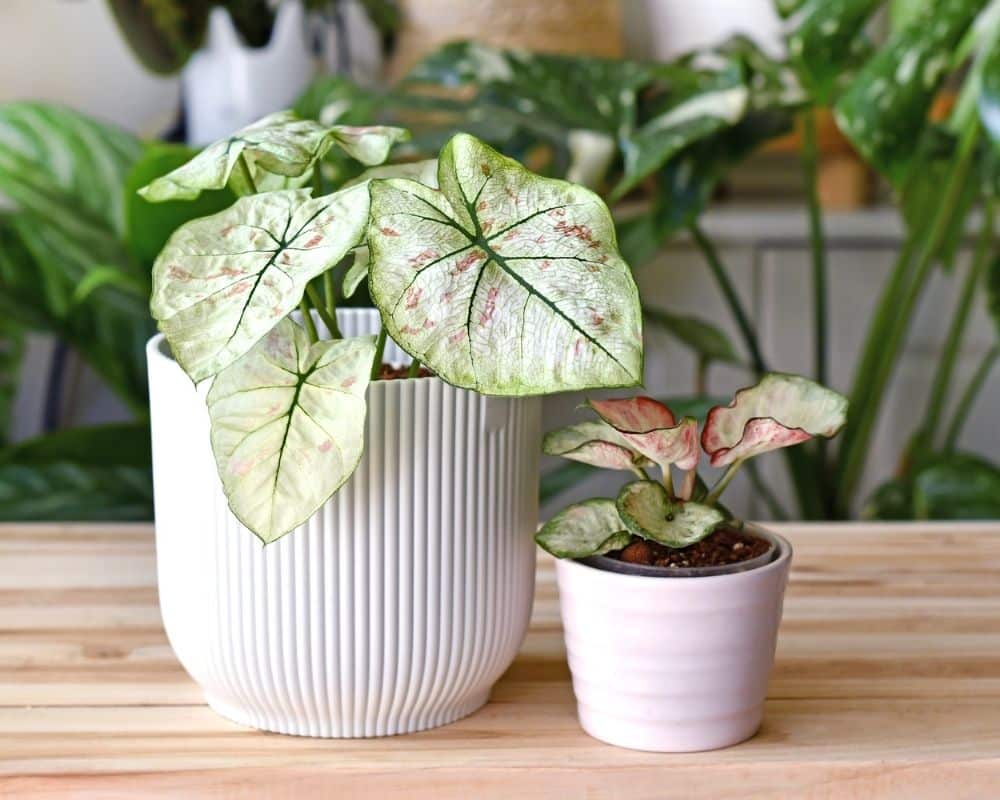
The right soil is crucial for Caladium plant care:
- Rich, Well-Draining Soil: Caladiums prefer a rich, fertile soil that retains some moisture but drains well.
- Amend with Organic Matter: Amend your potting mix or garden soil with plenty of organic matter like compost or well-rotted manure to provide nutrients and improve drainage.
- Slightly Acidic Soil: They generally prefer a slightly acidic to neutral soil pH (around 5.5-6.5).
Fertilizer
Fertilizing is an integral part of Caladium plant care:
- Regular Feeding During Growing Season: Caladiums are moderate to heavy feeders and benefit from regular fertilization during their active growing season (spring and summer) to support their vibrant foliage growth.
- Balanced Liquid Fertilizer: Use a balanced liquid houseplant fertilizer diluted to half the recommended strength every 2-4 weeks.
- High Phosphorus Fertilizer (Optional): Some growers use a fertilizer higher in phosphorus to encourage strong tuber development.
- Stop Fertilizing Before Dormancy: Once the leaves begin to fade and the plant prepares for dormancy, stop fertilizing.
Managing Dormancy

Understanding dormancy is key to Caladium plant care:
- Natural Dormant Period: Caladiums naturally go dormant in the fall and winter as temperatures cool and day length decreases. The leaves will start to turn yellow and gradually wither.
- Allow Foliage to Die Back Naturally: Do not cut off the foliage until it has completely yellowed and withered. “This helps the plant store energy in its tubers for the upcoming growing season.
- Stop Watering: Once the foliage has died back, stop watering entirely.
- Store Tubers Dry: Carefully dig up the tubers (if outdoors or if you want to save them from a cold indoor environment). Clean off any excess soil and allow them to air dry for a few days. Store the tubers in a cool (around 15-21°C or 60-70°F), dark, and dry place, such as in a paper bag or wrapped in dry peat moss or vermiculite.
- Replanting in Spring: In late winter or early spring, you can replant the tubers in fresh potting mix. Plant them about 2 inches deep with the “eyes” (small bumps where new growth will emerge) facing upwards. Begin watering sparingly and increase as new growth appears. Provide warmth (bottom heat can be beneficial) and bright, indirect light to encourage sprouting.
Caladium Propagation
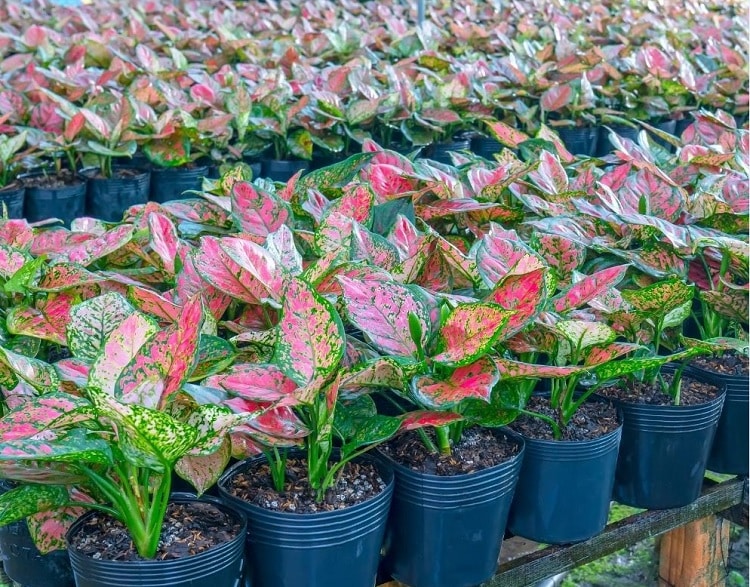
Propagation is an exciting aspect of Caladium plant care:
- Tuber Division: When repotting in the spring, you can carefully divide larger tubers that have multiple “eyes” into smaller sections, ensuring each section has at least one eye. Allow the cut surfaces to dry for a few hours before planting each section in its own pot.
Common Issues and Troubleshooting in Caladium Plant Care
Addressing common issues is vital for successful Caladium plant care:
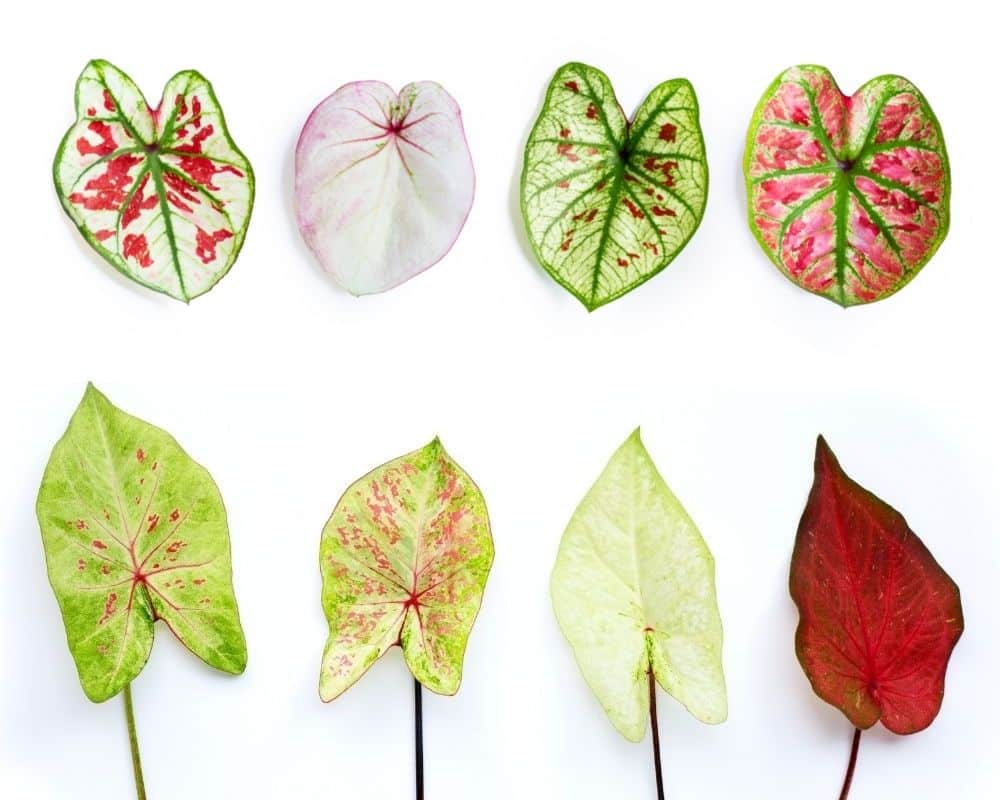
- Scorched Leaves: Too much direct sunlight. Move the plant to a shadier location.
- Pale or Faded Colors: Insufficient light. Move the plant to a brighter indirect light source.
- Brown, Crispy Leaf Edges: Low humidity. Increase humidity levels.
- Lack of Growth: Soil too cold, insufficient light, or the tuber is still dormant. Ensure proper temperature and light for sprouting.
- Yellowing Leaves (during growing season): Overwatering, underwatering, or nutrient deficiency. Adjust watering habits and consider fertilizing.
- Drooping Leaves: Overwatering, underwatering, or cold temperatures. Adjust watering and ensure a warm environment.
- Pest Infestations (Spider Mites, Aphids): Check leaves regularly and treat with insecticidal soap or neem oil.
Tips for Successful Caladium Plant Care
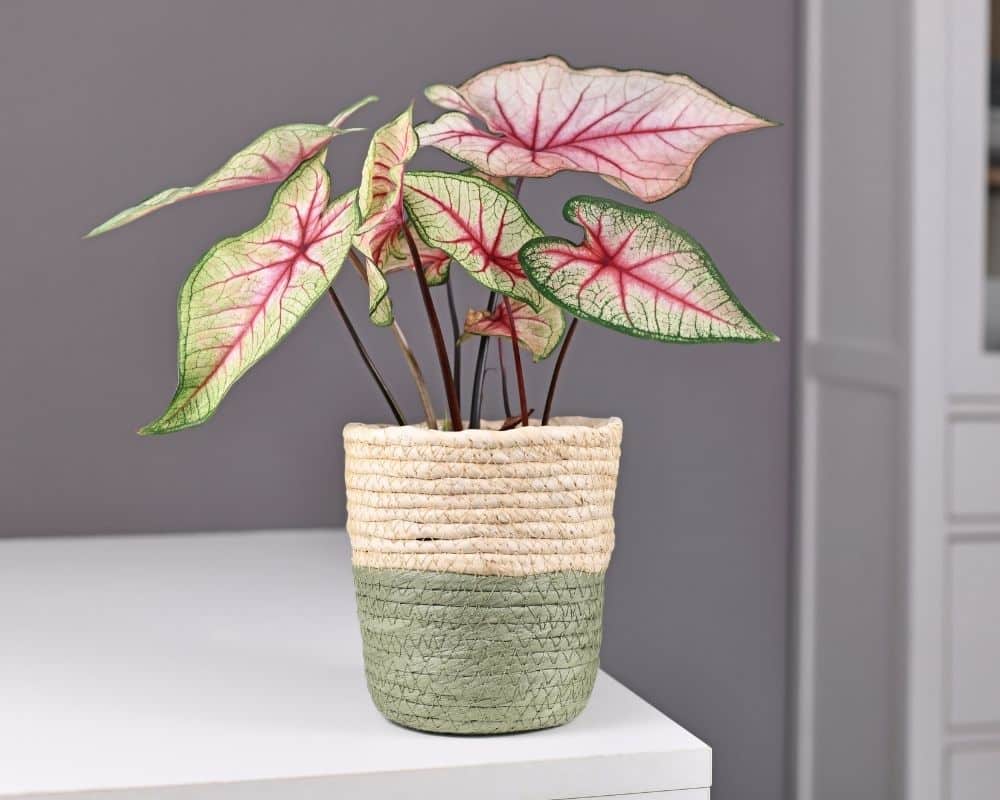
To ensure your Caladium thrives, follow these tips:
- Provide bright, indirect light.
- Maintain consistently moist but not waterlogged soil during the growing season.
- Ensure high humidity levels.
- Keep the plant in a warm environment.
- Use a rich, well-draining soil mix.
- Fertilize regularly during active growth.
- Understand and manage their natural dormancy period.
With their breathtaking and diverse foliage, Caladiums are a true spectacle in the plant world. By understanding their need for warmth, humidity, consistent moisture during growth, and a proper dormant period, you can enjoy their vibrant beauty year after year—even if they disappear for a few months in between. Embrace their seasonal cycle and revel in the kaleidoscope of colors they bring to your home or garden.
By integrating these comprehensive Caladium plant care tips, you’ll be well-equipped to nurture these stunning plants successfully, ensuring they remain a captivating part of your indoor or outdoor space. If you liked this article, we recommend you to read our article about Best Indoor Plants: Top 15 Picks and Care Tips as well 🙂


